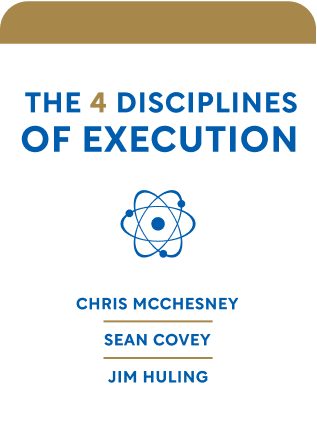

This article is an excerpt from the Shortform book guide to "The 4 Disciplines of Execution" by Chris McChesney, Sean Covey, and Jim Huling. Shortform has the world's best summaries and analyses of books you should be reading.
Like this article? Sign up for a free trial here .
Are you looking to accomplish personal goals? Do you want to know if the 4DX system might work for you outside of a business setting?
The 4DX system is perfect for all settings, including work, personal, and family goals. The disciplines will remain the same for the personal 4DX system, but you will just approach them differently.
Read on for the 4DX system as applied to personal goals.
4DX System for Personal Goals
4DX is an operating system that gets results and creates permanent behavior change. This doesn’t only apply to the workplace—you can use it for personal and family goals as well.
It can be hard to get things done in your personal life because they don’t have inherent urgency. For example, caring for your health or strengthening your marriage aren’t as urgent as bringing in a paycheck.
80% of the US health budget is devoted to five behavioral issues: smoking, drinking, overeating, stress and insufficient exercise. Everyone knows these five things are bad for you. But even after experiencing heart attacks, many people don’t change their behavior. They know they should, and they probably want to, but they can’t. Their problem is execution.
The 4DX system is similar to how you would approach a workplace goal:
Discipline 1: Focus
Choose your WIG. It might be harder to define a point B for certain personal goals. For example, a WIG a grandfather chose a WIG of letting his grandchildren know he loves them. His lag “measure” was if the grandkids ran up and hugged him.
Extended Example: Losing Weight
Ellen, a kickboxer, wanted to lose weight so she could fight in a lighter weight class. She decided on a WIG of “Decrease weight from 125 pounds to 112 pounds by November 1.” (Shortform example)
Discipline 2: Leverage
Decide on your lead measures. Only choose as many as you need to—don’t add unnecessary complexity.
Extended Example: Losing Weight
Ellen knew that the two options for lead measures were diet and exercise. She already did a lot of exercise, so she decided to focus on diet. Her lead measure was “Don’t eat more than 1800 calories per day.”
Discipline 3: Engagement
Create a scoreboard that shows the WIG, lead and lag measures, is visible, and is quick to read.
Extended Example: Losing Weight
Ellen used an app to track her progress. She configured the app to show her current weight, her goal weight, number of calories eaten so far for per day, and max calories for the day. She set the app to send her notifications so the scoreboard would remain visible.
Ellen’s gym got into the game as well. Some of her training partners downloaded the app too, or shared their low-calorie snacks.
Discipline 4: Accountability
In a 4DX system for a personal setting, you don’t have a team and boss to report to, so choose a friend or family member to keep you accountable.
Extended Example: Losing Weight
Ellen chose to be accountable to her coach. Even though the WIG session was less formal than it would be in an organization, she and her coach talked about the scoreboard and she made commitments each successive week. Her training partners checked in with her regularly about her progress. She achieved her WIG.

———End of Preview———
Like what you just read? Read the rest of the world's best book summary and analysis of Chris McChesney, Sean Covey, and Jim Huling's "The 4 Disciplines of Execution" at Shortform .
Here's what you'll find in our full The 4 Disciplines of Execution summary :
- The 4 disciplines that can make any strategy a successful reality
- Why a great plan falls apart when you don't think adequately about execution
- The 6 steps you need to scale the 4DX model across an entire organization






